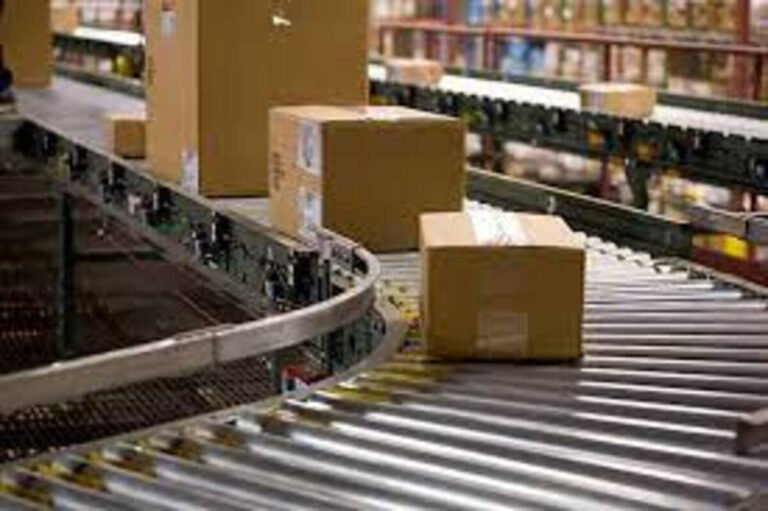Metal Surface Inspection Through AOI and Machine Vision Technology
Introduction
In the heart of manufacturing, especially in automotive, construction, and aerospace sectors, maintaining the impeccable quality of metal sheet surfaces is not just important—it’s paramount. I’ve seen firsthand how minor imperfections on a flawless material can snowball into significant issues later. When I walked through the production facility for the first time, I watched a line operator pause the process due to a tiny scratch on a component meant for an aircraft wing. That tiny flaw could compromise structural integrity, functionality, and performance. These stringent standards exist for a reason, and in my experience, they are always evolving.
To meet rising demands, manufacturers are turning toward advanced technologies like Automated Optical Inspection (AOI) and machine vision systems, both of which have become absolute game changers. Tools like EasyInspect and EasyMeasure are reshaping the way we handle metal inspection—they’re fast, reliable, and efficient, seamlessly integrating into new or existing environments. Their ability to detect defects and anomalies, and monitor yield through every stage of the process, means optimum product quality is achieved with reduced costs. When I helped deploy such a system, the shift to a zero-defect goal suddenly felt achievable. With such robust methods and techniques, even the subtlest deviation from an acceptable standard can be quickly identified and addressed, ensuring safety and efficiency across numerous industries.
The Importance of Metal Surface Inspection
Different sectors across industries depend on metal sheets as core components. The outer quality of metal sheets determines how final products function while affecting their operational safety, together with their visual appeal. When used in aerospace applications, a minor surface blemish can harm the structural stability of aircraft components. Surface defects in automotive components undermine both the exterior look and protection against corrosion.
Modern manufacturing lines, which run at high speeds, now make manual inspection insufficient for identifying minimal defects. Machine vision systems deliver automated, accurate efficient inspection solutions that fill the need for modern manufacturing.
Common Surface Defects in Metal Sheets
Correct metal surface inspection requires a deep comprehension of the different defects that may appear on metal objects:
- Handling as well as cutting, and rolling operations produce surface abrasions, which we refer to as scratches.
- Small circular openings appearing because of chemical contamination during production serve as pinholes.
- Surface impact and handling pressure both produce dents as defects in metal products.
- Metal slitting or cutting procedures lead to irregular and rough edges known as cutting defects.
- Manufacturers need to detect various sized defects because their identification is essential to ensure product quality and conform to industry specifications.
The Role of AOI Systems in Metal Surface Inspection
AOI systems use high-resolution cameras, precise sensors, and smart algorithms to automatically inspect metal surfaces. They capture detailed images and analyze them instantly, spotting defects that are often too small or subtle for the human eye to catch.
Key Features of Modern AOI Systems:
- High-Resolution Imaging:
- Real-Time Analysis:
- Customizable Parameters:
- Automated Reporting:
Integrating Machine Vision Systems for Enhanced Inspection
AOI receives hardware and software capabilities from machine vision systems for image acquisition and processing operations. The systems function through synchronized operations of cameras, lighting, and lenses, together with image processing software to perform accurate inspections.
Advantages of Machine Vision Systems:
Non-Contact Inspection: Eliminates the risk of damaging delicate surfaces during inspection.
The system produces uniform inspection outcomes for stable performance that minimize the manual inspection variations.
The system shows scalability because it effortlessly handles various production quantities and product ranges.
Process improvements, together with predictive maintenance, become possible through the data collection functions of the inspection system.
Manufacturers who implement machine vision systems gain superior inspection technologies for verifying product quality to protect their production line.
Case Study: Implementing AOI in Metal Sheet Production
The automotive sector received product recalls and dissatisfied customers because a metal sheet facility producing for the automotive market could not stop surface defects from passing through its manual inspection process.
The company achieved major advances through its implementation of an AOI system backed by machine vision setup technology.
The automated system identified surface defects with a minimum size of 50 microns, which manual verification had failed to detect.
Product losses decreased because flaws could be identified early through the system’s detection capabilities.
AOI system reporting tools gave the company insights into defects, which led to smarter production process decisions.
The system update raised both product excellence and rebuilt consumer trust and satisfaction.
Future Trends in Metal Surface Inspection
As technology advances, combining artificial intelligence (AI) and machine learning with AOI and machine vision systems is poised to transform metal surface inspection on an entirely new level.
Emerging Trends
Predictive Insights: Leveraging past inspection data to forecast and proactively address possible defects before they occur.
Continuous Learning: Smart systems that evolve, learning from new defect patterns and adapting to unexpected variations.
IoT Connectivity: Linking inspection technologies with the Internet of Things (IoT) to enable real-time tracking, monitoring, and process control.
Conclusion
Surface examination of metals has developed into an essential manufacturing foundation that maintains critical importance, especially in aerospace operations, as well as automotive production and construction projects that must uphold absolute quality precision. Hand-operated inspection methods alone do not satisfy current industry quality requirements according to observed practices in the marketplace. Manufacturers achieve efficiency improvements and waste reduction for improved customer satisfaction by implementing Automated Optical Inspection (AOI) and machine vision systems, which detect minuscule defects.
The integration of AI and machine learning and IoT technologies in inspection procedures will lead to predictive quality management along with enhanced decision-making capabilities and decreased product defects in the coming future. All serious market competitors must invest in contemporary surface inspection systems because they represent a necessity above mere upgrade potential.
Conclusion
Metallic surface inspection has evolved into a critical pillar of modern manufacturing, especially in sectors like aerospace, automotive, and construction, where precision and quality are non-negotiable. From firsthand industry experience, it’s clear that relying solely on manual inspection is no longer sufficient to meet today’s stringent standards. With the integration of Automated Optical Inspection (AOI) and machine vision systems, manufacturers are not only detecting the tiniest defects but also unlocking higher efficiency, reduced waste, and improved customer satisfaction.
As technologies like AI, machine learning, and IoT become more deeply integrated into inspection workflows, the future holds immense promise for predictive quality control, smarter decision-making, and even fewer product flaws. For any company aiming to stay competitive, investing in modern surface inspection systems is not just an upgrade—it’s a necessity.
Frequently Asked Questions (FAQs)
1. Why is metallic surface inspection so important in manufacturing?
Metallic surface inspection ensures structural integrity, safety, and visual quality. Even small defects can lead to major issues, especially in aerospace or automotive applications.
2. What is Automated Optical Inspection (AOI)?
AOI is a system that uses high-resolution cameras and smart algorithms to automatically detect surface defects, offering faster and more accurate inspections compared to manual methods.
3. What types of defects can occur on metal surfaces?
Common defects include scratches, pinholes, dents, and rough edges from cutting. Identifying these is essential to meet industry quality standards.
4. How do machine vision systems enhance metal inspection?
Machine vision systems bring consistency, speed, and non-contact inspection capabilities, helping manufacturers reduce errors and improve productivity.
5. How does AI contribute to surface inspection?
AI allows systems to learn from previous inspections, adapt to new defect types, and predict issues before they happen, enhancing reliability and efficiency.
6. What role does IoT play in inspection systems?
IoT connects inspection systems for real-time data sharing, monitoring, and control, enabling smarter manufacturing environments.
7. Can small manufacturers benefit from AOI systems?
Yes! Modern AOI systems are scalable and can be integrated into small or large operations, providing measurable benefits in quality control and process optimization.







